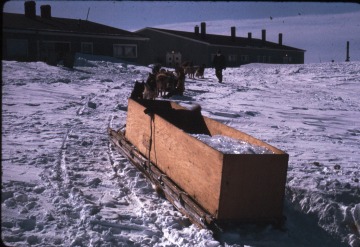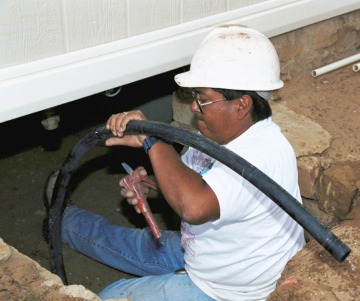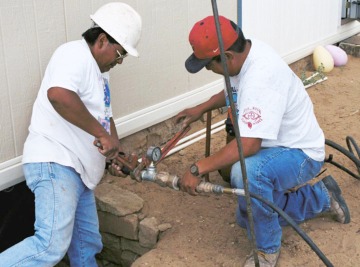2009: Many reservation homes lack clean drinking water
Safe drinking water and sanitary sewage disposal are unavailable in 13 percent of American Indian/Alaska Native homes on reservations, compared with 1 percent for the overall U.S. population. The Indian Sanitation Facilities Act directs the Indian Health Service (IHS) to provide sanitation facilities such as safe drinking water and sewage systems to Indian homes. An IHS study recently finds that every dollar it spends on sanitation facilities yields a 20-fold return in health benefits.
The cost of providing sanitation facilities is estimated at $2.6 billion, with a backlog of more than 3,000 planned sanitation facilities.
- Theme
- Federal-Tribal Relations
- Region
- Arctic, California, Great Basin, Great Plains, Northeast, Northwest Coast, Plateau, Southeast, Southwest, Subarctic
Ice being transported by dogsled to be used for drinking water in Kwigillingok, Alaska.
Courtesy Robert Fortuine papers, Archives and Special Collections, Consortium Library, University of Alaska Anchorage
A worker with the Indian Health Service connects a water line on a Navajo Reservation in New Mexico. Under the Indian Sanitation Facilities Act, the Indian Health Service is required to provide safe water and sewage systems for Native American homes.
Courtesy Indian Health Service/U.S Department of Health and Human Services
Workers with the Indian Health Service connect a water line on a Navajo Reservation in New Mexico. Under the Indian Sanitation Facilities Act, the Indian Health Service is required to provide safe water and sewage systems for Native American homes.
Courtesy Indian Health Service/U.S. Department of Health and Human Services


